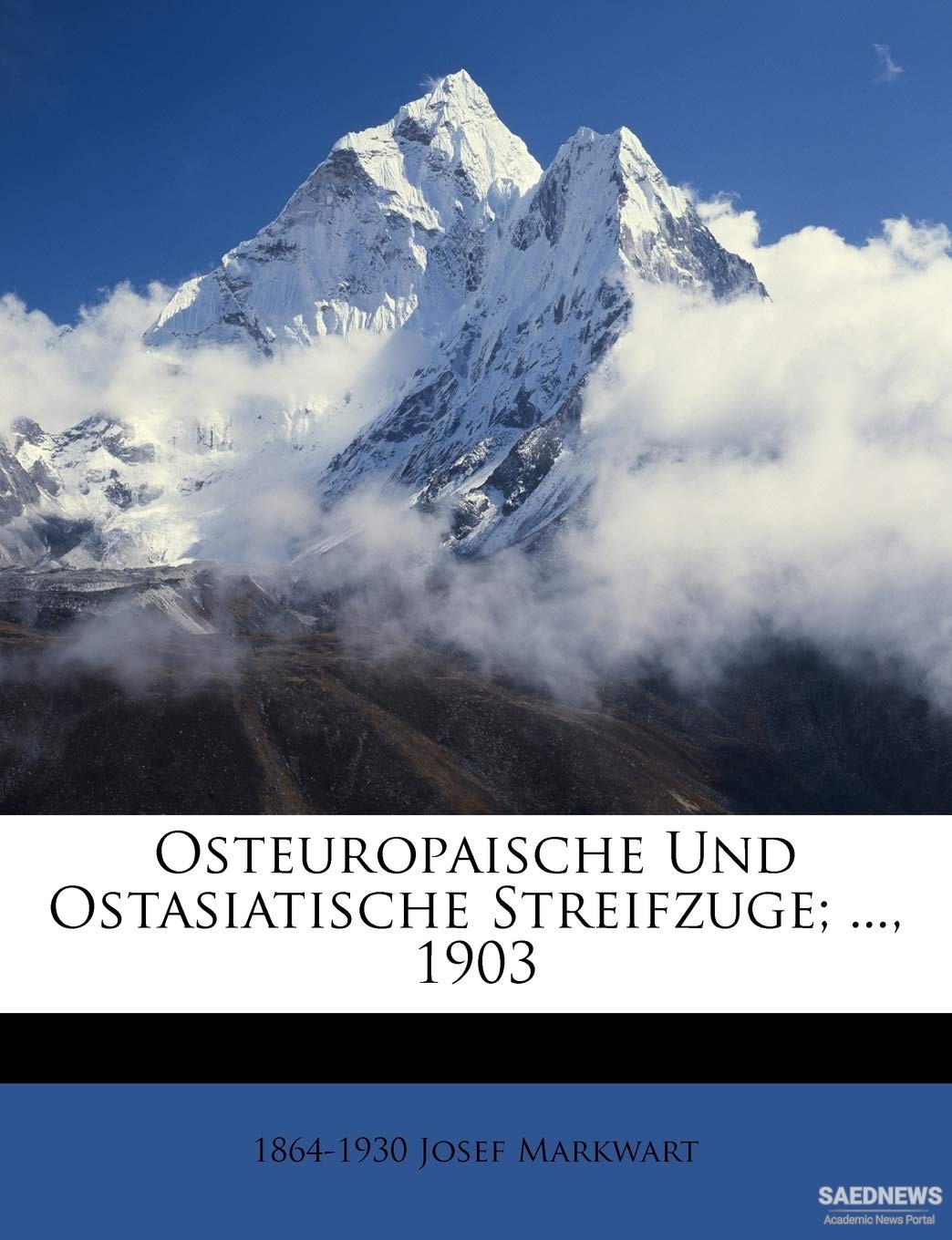Life. The son of a peasant farmer, Markwart enrolled in Tübingen University to study Catholic theology, but he soon changed subjects and devoted his time to philological and historical studies, focusing in particular on ancient history and classical and Oriental languages. The teachers to whom he felt indebted most were Albert Socin (1844-99), the Swiss orientalist, who at that time taught in Tübingen, and the theologian Paul Vetter (1850-1906), from whom he acquired thorough knowledge of the Armenian language. In 1889, on the recommendation of Socin, Markwart went to Bonn as an assistant secretary of the orientalist Eugen Prym (1843-1913) in order to assist him in editing Ṭabari’s History. Working with Prym not only gave Markwart the opportunity to devote himself more deeply to Arabic, and more specifically to Arabic historians, but also brought him into contact with the Dutch Arabist Michael Jan de Goeje (1836-1909), the chief editor of Ṭabari’s compendious work. Having submitted his Assyriaka des Ktesias (Markwart, 1893) as his doctoral thesis, he graduated from Tübingen in 1892, and in 1897 he qualified as a university lecturer for ancient history (cf. Markwart, 1896b).
Since he could not gain a professorship or another permanent position, in 1900 he went to Leiden as an assistant (and later as curator) at the ethnographical museum (Museum Volkenkunde). In 1902, he again qualified for a position at Leiden University in the subject of languages of the Christian Orient, and by 1910 had become an assistant to their department of Central Asiatic languages. He finally achieved his goal in 1912, when he was appointed extraordinary (and ordinary from 1920 forward) professor of Iranian and Armenian philology at Berlin University. In 1922 he changed the spelling of his last name from “Marquart” to the more Germanic “Markwart,” paralleling his tendency to make use of an idiosyncratic orthography in his writings.
Studies on the history and (historical) geography of Iran. Markwart’s first book (1893), his doctoral thesis, aims at reconstructing and critically appreciating the Assyriaká of Ctesias of Cnidus, one of the major works of Greek historiography on the early history of the Near East. The Assyriaká has only survived through excerpts and later quotations, though it was read up until Byzantine times. From analyzing this work he expected to gain a significant insight into the author’s and, in general, the Greek historians’ methodologies, and not necessarily a deeper familiarity with the general historical facts. The main source for our knowledge of Ctesias’s work is Diodorus Siculus (2.1-34), who alone presents a fairly coherent account of ancient Near Eastern history before the Persian empire; it is taken partly from Ctesias, partly from other authors, but always raises the problem of whether Diodorus drew his wisdom directly from Ctesias (whom he quotes several times by name) or from other sources depending on Ctesias as well.
Contrary to the former method of comparing the Ctesianic elements in Diodorus with fragments and quotations preserved elsewhere, Markwart started his study with those passages in Diodorus that expressly go back to later authors of the Hellenistic period. Because Markwart realized that some passages are clearly based on various writings of Agatharchides of Cnidus (2nd century BCE), Markwart (1893, pp. 504-20) ventures the statement that this author (and particularly his Asiatiká [or whatever may have been its exact title], a history of the Near East up to the Diadochi) is the only source of Diodorus for the Assyrian and Median history in book II of his work. In addition, he tries to uncover and establish beyond doubt the truly Ctesianic elements in Diodorus (and other sources).
Moreover, Markwart examines the correlation between Photius’s excerpts from Ctesias and the structure of Ctesias’s Persiká itself (or the range of its single parts, its “books”). Here he observes a considerable imbalance, which he explains with the deduction (1983, p. 592) that Photius did not read the original of Ctesias’s work but only an epitome of it, or, in other words, that his excerpt is an extract of an extract (viz., that of Nero’s contemporary Pamphila). This also explains why the Assyrian and Median histories are missing entirely from Photius’ excerpt, and why he often includes names in modernized forms (e.g., Ekbátana, instead of Ctesias’s Agbátana, as confirmed by Stephanus Byzantius). In addition, Markwart deals with the sources used by Ctesias himself and with the way Ctesias used them (pp. 594-630).
Motivated by the work of his orientalist friend Willy Bang (Louvain) about the Codex Cumanicus, Markwart dealt with the national character of the Cumans (Markwart, 1914). Starting from Constantine Porphyrogennetus’s ethnographical survey of South Russia in the Middle Ages, he collects all information he could find about the Cumans (Byz.-Gk. Kómanoi) or (Russ.) Polovtsy, the Petchenegs, Oghuz, Kipchaks, Tatars, and others in all sorts of sources, and he attempts to filter out of the exaggerating reports and stories the reliable facts on their origin and ethnic character. He presents the relevant accounts (especially in Arabic and Chinese language), analyzes them in detail and compares them with one another; as always he undertakes to identify the persons quoted and to localize the places (towns, rivers, mountains, etc.) mentioned. Thus historical geography and ethnography received a pioneering work dealing with an area for which the time seemed not yet ripe even for its author. In a diagram on p. 162, Markwart summarizes the layers of peoples who followed each other in the particular regions of the steppes on both sides of the Volga River from the 7th to the 13th century. Of direct Iranistic relevance is an appendix (pp. 196-98) on the significance of historical topography for textual criticism of the Šāh-nāma, which is illustrated by an instructive example, viz. marz i Kūšān meaning “march towards the Kushan empire.”


 Wilferd Ferdinand Madelung
Wilferd Ferdinand Madelung














































